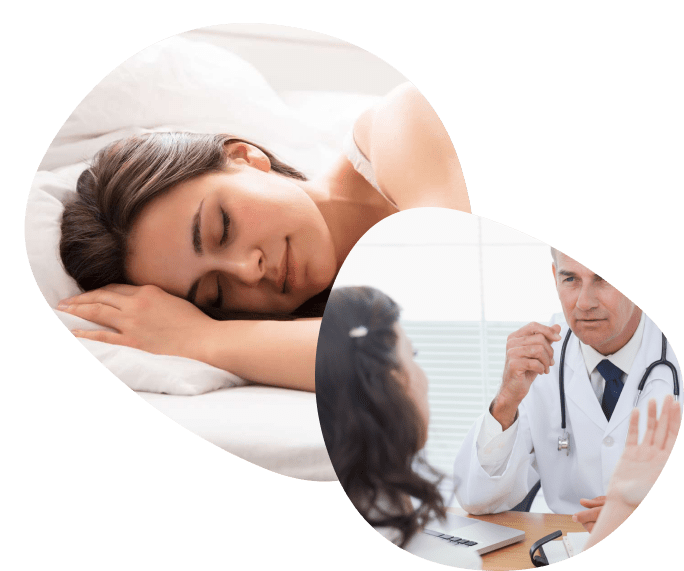Mild Obstructive Sleep Apnea is a less severe form characterized by partial blockage of the upper airway during sleep. Even though its severity is mild and manageable, it should not be disregarded as it can have an evident adverse impact on sleep health and quality. Some common symptoms may include daytime fatigue, chronic snoring, morning headaches, and poor concentration.
Understanding Obstructive Sleep Apnea—Addressing Mild and Severe OSA
It’s time to understand obstructive sleep apnea and its associated struggles. Let’s talk with us and dive deep into mild obstructive sleep apnea and severe obstructive sleep apnea.
iSleep Physicians Group
Mild Obstructive Sleep Apnea


iSleep Physicians Group
Severe Obstructive Sleep Apnea
Severe Obstructive Sleep Apnea is a serious sleep disorder characterized by recurrent episodes of near-complete blockage of the upper airway during sleep, leading to adverse health complications. Treatment options may involve compliance with CPAP therapy to keep the airway open during sleep.
The Struggle with Obstructive Sleep Apnea
OSA occurs when the airway becomes partially or completely blocked during sleep, causing breathing pauses and a drop in oxygen levels. These disruptions trigger the brain to wake up at intervals, preventing deep sleep. The cycle can repeat numerous times throughout the night, leading to fatigue, irritability, and other health complications.
Signs and Symptoms
Loud and chronic snoring is one of the hallmark signs of OSA, but it’s not the only one. Daytime sleepiness, morning headaches, difficulty concentrating, and waking up with a dry or sore throat are common indicators. However, symptoms may be less severe in people with mild obstructive sleep apnea. It’s important to note that not everyone who snores has sleep apnea, but persistent symptoms should not be ignored.
Risk
Factors and Consequences
Several factors contribute to the development of OSA, including obesity, age, family history, and anatomical variations like a narrow airway or enlarged tonsils. However, untreated OSA can have serious consequences, including an increased risk of cardiovascular problems, hypertension, stroke, and impaired cognitive function.
iSleep Physicians Group
Get Hold of Your Sleep—Reclaim Your Sleep Health
The first step in treating mild obstructive sleep apnea and severe obstructive sleep apnea is to have a detailed consultation with a sleep specialist and conduct a sleep study for accurate diagnosis and treatment. Effective strategies may include CPAP therapy and lifestyle modifications such as weight management, abstaining from alcohol consumption before bedtime, and medically treating the underlying causes contributing to OSA.

iSleep Physicians Group
Final Remarks from iSleep Physicians
Don’t let OSA deprive you of peaceful and restorative sleep, compromising on quality of life and sleep health. Exploring multiple treatment approaches can liberate you from the adverse effects of obstructive sleep apnea. Embrace peaceful nights, replenish your energy, and say hello to revitalized mornings. iSleep physicians are playing their part and supporting finding the best possible treatment routes.

Love to hear from you,
Get in Touch
We are always here to sort out concerns, share valuable information, or hear from you. Contact us!
FAQ's
What is obstructive sleep apnea?
Obstructive sleep apnea (OSA) is a widespread sleep disorder caused by recurrent episodes of complete or partial obstruction of the upper airway while sleeping.
What is the main cause of obstructive sleep apnea?
Obstructive sleep apnea (OSA) is mostly brought on by the upper airway becoming narrowed or blocked as you sleep and the throat muscles relaxing or collapsing.
What is the difference between sleep apnea and obstructive sleep apnea?
Sleep apnea is a wide term that consists of different types of breathing disorders relevant to sleep. On the other hand, obstructive sleep apnea is a characteristic of sleep apnea.
What is the treatment for mild obstructive sleep apnea?
Mild obstructive sleep apnea (OSA) treatment frequently starts with conservative and lifestyle change methods, for example, regular exercise, weight loss, sleeping position, & eliminating drugs.

